Here at Tapptitude, we believe learning is an ongoing process. If you agree with us and are looking for some book recommendations that will help you develop your skills, then you’ve come to the right place!
As the decade is coming to an end, we’ve decided to put together a list of books that defined the past 10 years of the startup world. From management to building products, to design and content writing, we have everything covered.
These are the books you’ve heard about if you’ve been around for a while, books that put into words knowledge needed in every enterprise.
These are books that can open your eyes to see your product and your users in a different way. Hopefully, some of them will make you feel like you’re not the only one thinking about your work in a certain way.
Take the opportunity to immerse yourself into any topic that catches your eyes and learn from people who have changed the way we think about startups, strategy, design and even the way we write.
Wait! Who is this list for?
The list of books coming up is addressed to:
- CEOs and executives
- Managers
- Entrepreneurs
- Marketers
- Writers
- Designers
- Freelancers
- Product developers
- All the people interested in personal growth and innovation
How will these books help you?
Basically, if you work on a tech product or anywhere near one, you’ll find this list useful.
Before you freak out that there are 25 book recommendations in this list, remember they’re not meant to teach you the skills to become a one-person startup show. They’re intended to help you understand how these fields work and how they are interconnected. They will also help you understand the language and challenges of each field that has a hand in how a product is made. They will empower you to have productive conversations with all the professionals you’ll have to work with, report to, or lead when building a product.
You might find that the more you learn about subjects you aren’t familiar with, you’ll become more aware of the challenges other people face. And as your knowledge grows, we hope you’ll become equipped to build successful and sustainable products that people love using.
What we cover in this post
- Must-read classics on product building
- Book recommendations for positioning and growth
- Book recommendations for understanding the design process
- Book recommendations for better writing
- Book recommendations of real-life startup lessons
- Book recommendations for learning how to work with people
Must-read classics on product building
Anyone can write about their business experiences, but you need to wait to see which books stand the test of time before you can pick the classics.
These are the books that have innovated the way we strategize and create products. Some have introduced new methodologies, and others offer specific guidelines that lead to success. All of the authors from this list have become household names in the industry. They often draw people to conferences and start trending conversations on Twitter. If you haven’t had a chance to read them yet, we recommend you start now!
Hacking Growth – Sean Ellis and Morgan Brown
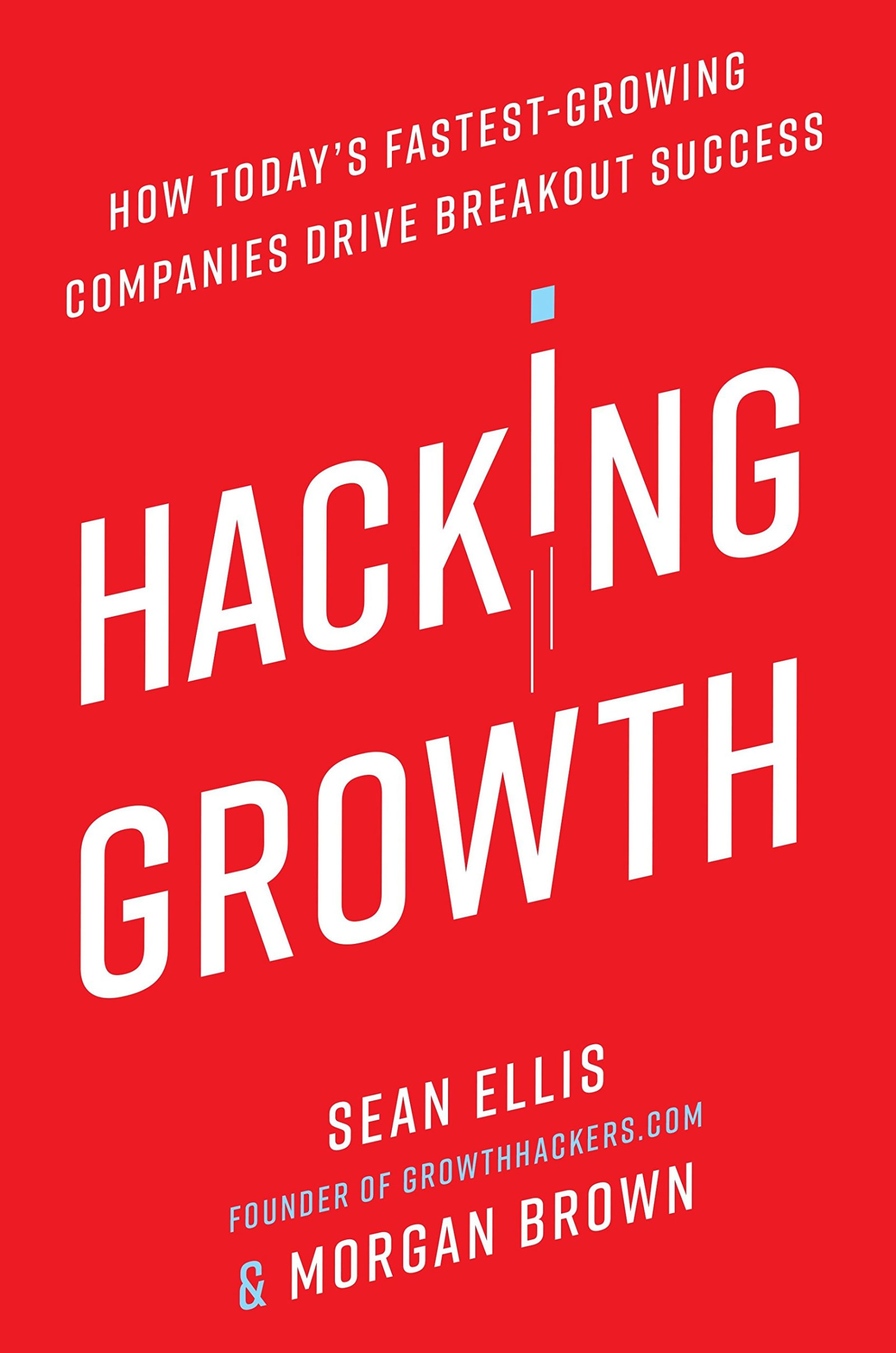
Who is it for: Founders and members of the growth and marketing team
When to read it: While your MVP is in development. Anytime you’re struggling with growth.
As the pace of our society becomes faster and faster, so does the need for businesses to stay relevant in the market. When it comes to growth, there are no shortcuts.
We’ve heard ‘move fast and break things’ and ‘just keep hustling’, but at the end of the day, you’re running a marathon, not a sprint. Burning out people and resources is not a sustainable way to grow.
However, there are ways in which you can nurture healthy growth. You can become more aware of your efforts and direct them in the direction that delivers the best results. This book helps you do precisely that. It’s addressed not only to marketers or to people involved in product innovation, but to all designers and managers who affect growth. Anyone looking for better ways to adapt, increase their customer base and grow their company will find this book useful.
We decided to write this book because we saw both the enormous potential for growth taking to serve all of these purposes, for all types of businesses and because we perceived the pressing need for a better understanding of the process and a guide to the best practices for implementing it. Growth hacking is a fundamentally new approach to market development with enormous power, but the truth of how it should be managed for optimal effects is as of yet poorly understood.
The lean startup – Eric Ries
Who is it for: Founders. Anyone who works in a startup.
When to read it: When you’ve got a product idea, but aren’t sure how to start.
This book is Amazon’s Best Seller in Lean Management and a classic when it comes to understanding startups. So what makes it a classic? It was the first to introduce the concept of lean development. That’s the iterative development of products to reduce risks throughout development cycles. It’s what everyone is doing today. It’s the book that introduced the concept of MVPs, and it’s why we’ve moved from big market research projects to small, pointed experiments that validate (or not) a hypothesis.
If you want to understand the mistakes that lead to the failure of many startups and how to prevent them, then we recommend reading this book.

Business Model Generation: A Handbook for Visionaries, Game Changers, and Challengers – Alexander Osterwalder and Yves Pigneur

Who is it for: Anyone who’s trying to turn an idea into a sustainable business.
When to read it: Before even starting development/operations, when you’re figuring out resourcing.
The book was co-authored by 470 strategy practitioners who adopted the ‘business model canvas’. It can be summarised as a business planning template meant to assist you in understanding your ideas and developing your future startup.
The exercises included in the book help you become more informed about your potential customers, the infrastructure you’ll need, and the financial possibilities. It’s the kind of book that enables you to understand all the moving parts of a business – even the ones you might not be aware of – and how to keep track of them.
This is a handbook for people-oriented towards action who want to take a structured approach towards business strategy.

The Startup Owner’s Manual: The Step-By-Step Guide for Building a Great Company – Steve Blank and Bob Dorf
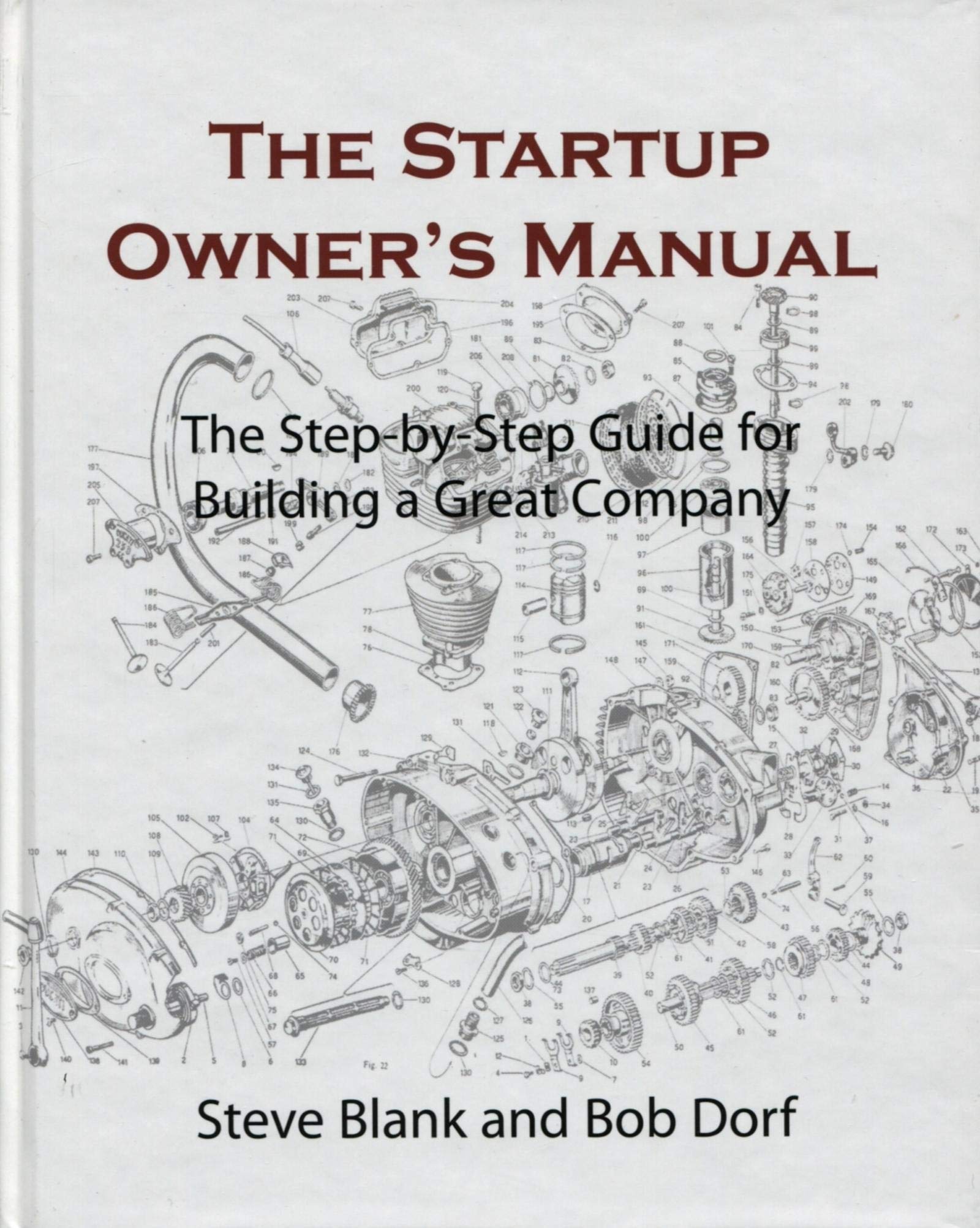
Who is it for: People entering the startup scene who need an overview.
When to read it: When you decide to call yourself an entrepreneur.
This is another great resource for learning how to build your startup as well as developing your product. It gives instructions on how to have a successful entrepreneurial experience. Whether you want your start-up to be founded on a digital platform or have it firmly locked in the real world, this book will take you through all the necessary steps required to make that happen.
No one book, including this one, offers a complete roadmap or all the answers for entrepreneurs. Yet together, the texts in the entrepreneurial management science library offer entrepreneurs guidance where none existed before. Startups, driven by potential markets measured in billions of people, will use this body of knowledge to test, refine and scale their ideas far faster and more affordable than ever.
The Lean Product Playbook: How to Innovate with Minimum Viable Products and Rapid Customer Feedback- Dan Olsen

Who is it for: Teams who’ve started development or looking to make improvements to their product. It’s useful for founders, product managers, designers, and marketers.
When to read it: After you’ve launched your MVP and have some usage data.
The popularity of the lean startup principles brought with it the need to have a comprehensive guide on how to use them. Dan Olsen presents the core concepts of the lean product process and offers techniques based on real-life experiences on how you can build and optimize your product. What better fits the market? What are your customer’s needs and how to target them? These are just a few questions that will find an answer in Olsen’s book.
I cover a range of important topics in addition to the Lean Product Process. The book walks you through detailed explanations of UX design and Agile development. It also provides in-depth coverage of analytics and how to use metrics to optimise your product.
Ruined by design – Mike Monteiro

Who is it for: Designers and anyone who makes decisions that affect the product.
When to read it: Anytime. Especially when you’re looking to build products with intent.
Called Book of the Year 2019 by the UX Collective and an Amazon bestseller from its publication, Ruined by Design is a book that challenges designers, and anyone working on products, to be mindful of the product decisions they’re making. He makes the case that the products we use today affect every facet of society, and it’s time to step out of the safe space where designers leave the consequences of their decisions to their employers. In a world where designers can’t ask ‘why?’ and say ‘no’, the products they’re creating can’t truly answer to the needs of the users or protect them.
Whether you see it as a call to arms or an introspection into what kind of world we’re building, Ruined by Design will push towards being more aware of the product choices you’re making.
The goal of this book is to help you do the right thing in environments designed to make it easier to do the wrong thing. (...) Either by action or inaction, through fault or ignorance, we have designed the world to behave exactly as it’s behaving right now. These are our chickens coming home to roost. The world is on its way to ruin and it’s happening by design.
Book recommendations for positioning and growth
If you build a product and no one uses it, can you still call yourself a founder? We’ve seen many founding teams stress about the development of their product, with little thought or budget put into their go-to-market strategy. Startups often feel their product in their end goal, when in fact, it’s getting people to use it and pay for it.
This is where positioning and growth come in. Knowing what audience you’re addressing, their specifics, where to reach them, and how to scale your customer acquisition channels is essential in building a sustainable business.
The good news is you can learn from the experiences of others and learn how to approach positioning and growth in a smart way. The next selection of books is meant to get you started.
Traction: How Any Startup Can Achieve Explosive Customer Growth – Gabriel Weinberg, Justin Mares

Who is it for: Founders, managers, marketers looking to gain traction.
When to read it: Before you start planning your go-to-market strategy. Also, go back to it when your current growth plans aren’t working.
This is a book packed with practical advice based on real businesses. All startups need traction: the element that makes a company grow fast and in the right direction. To get traction, Weinberg and Mares introduce the Bullseye framework on how to identify and approach growth channels. The outer layer is about understanding all the possible channels for user acquisition. This is usually done in the brainstorming phase. The next layer is the testing phase: you pick three channels that have the best potential for your current resourcing and positioning and plan for their specific traits. The final layer is the bullseye: you keep investing in the channels that have delivered results until they stop performing, while you add new channels which can accelerate your traction.
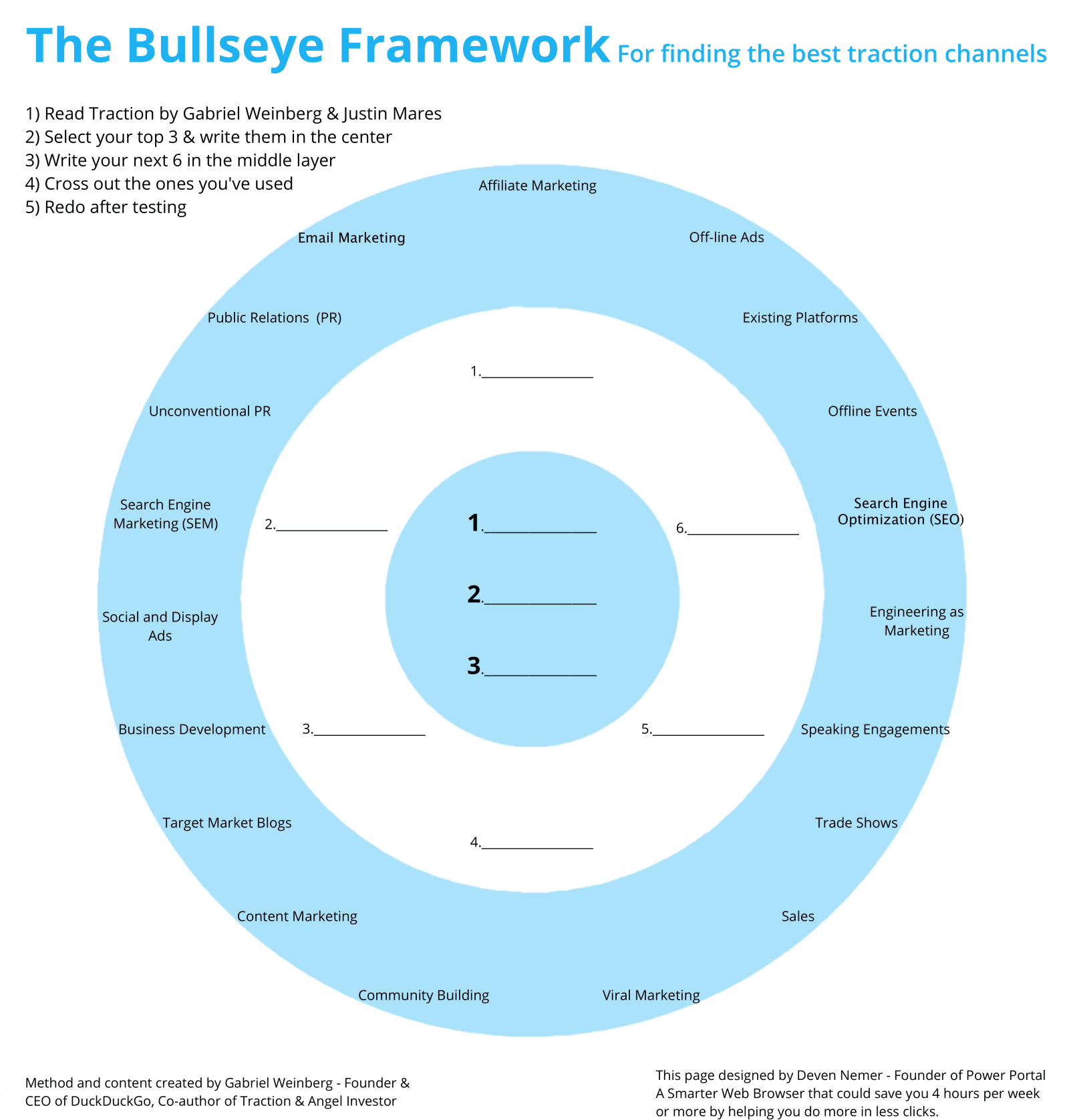
Super Thinking: The Big Book of Mental Models – Gabriel Weinberg, Lauren McCann

Who is it for: Anyone starting out their career or looking to make better decisions.
When to read it: Anytime. It’s a good idea to come back to it or read up on the examples when you’re facing new decision-making moments.
The most important skill a founder can have is the ability to assess any situation and make the best decision on how to move forward. This becomes easier to do when you possess the skill of working with mental models: defined ways of looking at the world and at data. While explaining how you can ‘upgrade your brain’, the authors of “Super Thinking” add a unique touch. The book is full of fun illustrations and graphs that engage the reader and make it stand out from other books that tackle similar themes. And while you’ll just get the introductory concepts brought by decades of research in economics, psychology, and sociology, it’s still a great starting point to jump down the research rabbit hole.
This is the book we wish someone had gifted us many years ago. No matter where you are in life, this book is designed to help you jump start your supper thinking journey. This reminds us of another adage, ’The best time to plant a tree was twenty years ago. The second best time is now’.
Obviously Awesome – April Dunford

Who is it for: Founders, executives, managers, marketers.
When to read it: When you’re trying to figure out how to position yourself compared to your competitors and how to identify your main audience.
In order for your business to stand out in a crowded market, you need to position it right. Achieving the correct positioning is like getting a washing machine in a household. Everything takes a lot of time and effort when you don’t have it, yet everything runs smoothly when you’ve got it.
April Dumford brings years of experience and useful tips on positioning and combines them into a comprehensive guide that does not lack a sense of humour. Your customers understand your product by looking at two different frameworks: market categories and trends. The road to a well-positioned business or product consists in placing your solution in the market that best highlights your key differentiating features and making people understand why that is relevant right now. If you’d like to see the art of positioning turned into a strategy and actionable insights you can follow to achieve it, this book is for you!
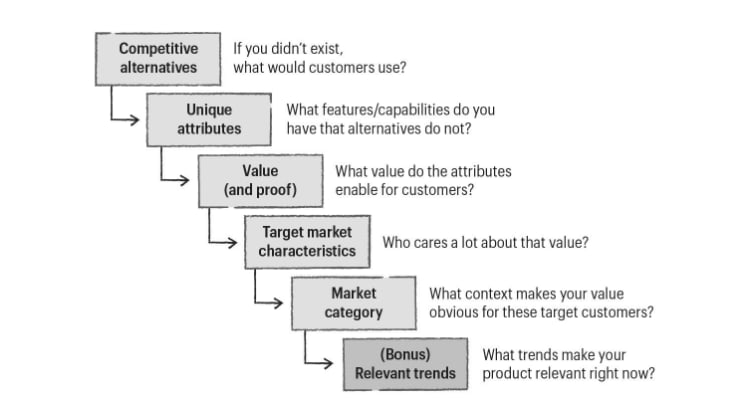

Badass: Making Users Awesome – Kathy Sierra

Who is it for: Founders, product people, designers, marketers.
When to read it: When you’re planning your go-to-market strategy and your users’ onboarding and activation.
When you work all day on a product, it’s easy to let it take up all the headspace and see success in terms of how the product is performing. Kathy Sierra wrote this book to make us all remember that what really matters is the success of the users.
In this funny and interactive book about product design and development, Sierra proposes a strategy that creates successful users, not just successful products and services. This means taking into consideration all the elements of the environment in which your product will be placed. It also requires paying attention to all the steps needed in understanding the context of your users. This is not your traditional business or marketing book, but you can expect to find here knowledge from a multitude of disciplines.

Book recommendations for understanding the design process
Designers have worked long and hard in the last decade to change the perception of their job from pixel pushers to important stakeholders advocating for the user and focusing on how the product works. The books we recommend in this section teach you how to think about the design process, how to look for what’s underneath an interface design decision, how to design for everybody and even how to negotiate and relate with clients.
Sprint: How to Solve Big Problems and Test New Ideas in Just Five Days – Jake Knapp, John Zeratsky and Brad Kowitz
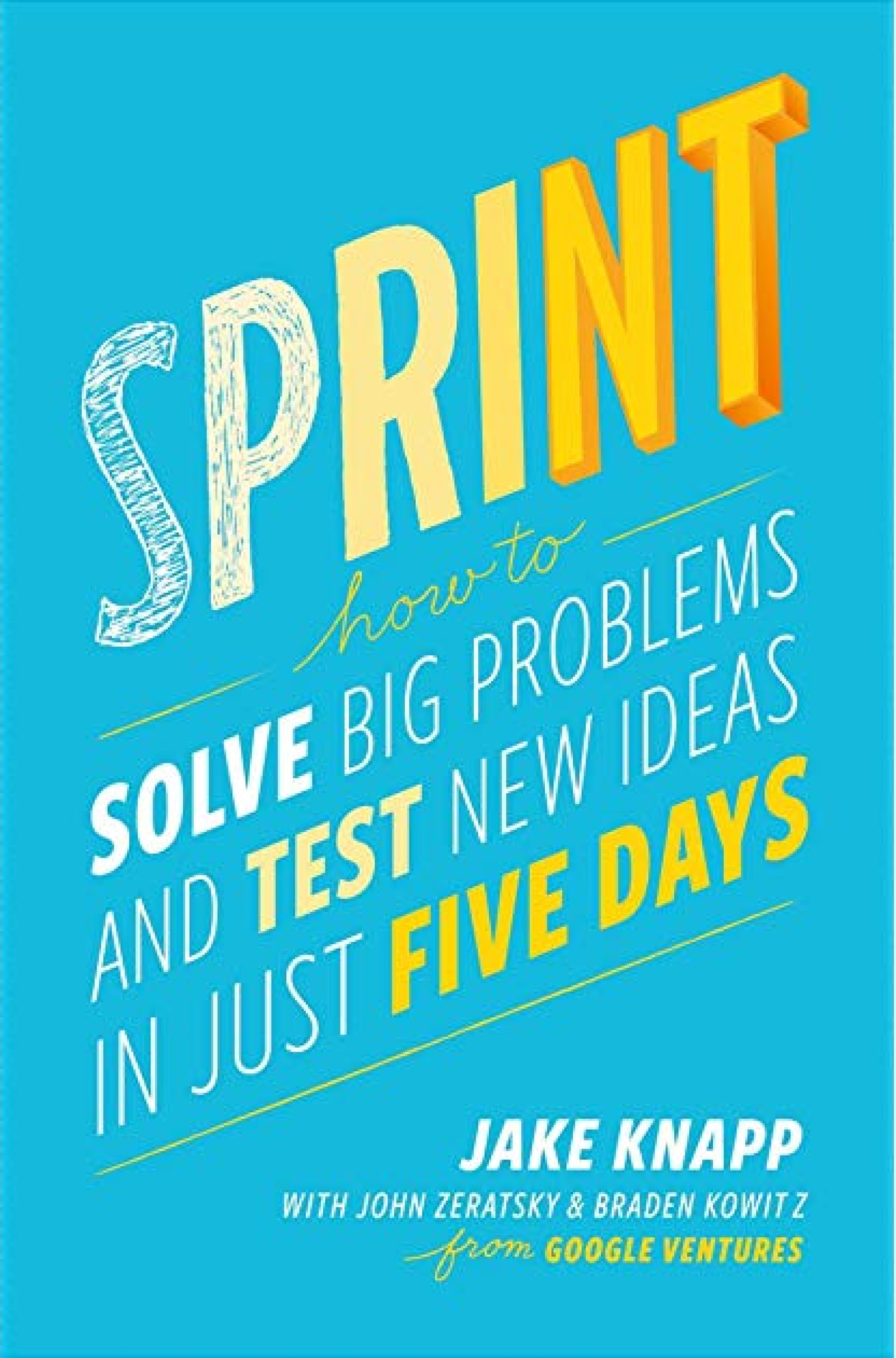
Who is it for: Founders, people managing teams, designers, marketers.
When to read it: When you’re looking to learn how to quickly validate hypotheses for new features, new products or new audiences.
Our best ideas often come not in long business meetings, but while waiting in line at a coffee shop, or while taking a shower. This is what Jake Knapp observed while conducting brainstorming sessions in his workshops. And this was how the idea of a design sprint was born. If you like using the lean methodology, then you will probably also like working in sprints. It reduces time wasted in unnecessary meetings and strips down ideas to the simplest version that can generate insights. Sprints are also great ways to stage informal interdisciplinary team buildings (nothing brings people together better than a tight deadline). The book provides step by step advice on how to organise a sprint, set deadlines and test ideas.

Living in Information: Responsible Design for Digital Places – Jorge Arango

Who is it for: Designers and anyone who makes decisions that affect the product.
When to read it: Anytime. Especially when you’re trying to figure out what kind of user data you need or what to do with it.
Every day we digitalise more and more of our experiences. The way we work, shop, or talk to people and strangers is shaped by the digital products we’re building. So what approaches should we take to design? Arango introduces the concept of ‘information environments’ and recommends connecting them to physical environments. This book is for all the designers and people involved in the creation of digital products who want to create software that is sustainable from a social, economic and ecological point of view.
If you are responsible for a digital product or service, or part of a team responsible for one, you will benefit directly from understanding how to design more sustainable information environments. And if you aren’t responsible for such a system, you will still benefit from reading this book. Many of the most important decisions in your life are mediated in places that happen in small rectangular screens. It behooves you to understand how information environments affect your behaviour.
Accessibility for Everyone- Laura Kalbag

Who is it for: Founders, designers, marketers, anyone who makes decisions that affect the product.
When to read it: Anytime you realise your product intersects or is used by audiences with disabilities (temporary or permanent).
According to the World Health Organization, at least 2.2 billion people have a vision impairment or blindness. Moreover, around 466 million people have a disabling hearing loss. Many of these people have difficulties when reading the content on a webpage or find it impossible to do so. In response to this (and to stop public institutions from (un)intentionally leaving segments of the public they’re serving out), the EU issued the Web Accessibility Directive. This states that all sites and mobile applications from the public sectors will need to make their content accessible to people with disabilities. But there’s more to it. Everyone benefits from content accessibility, and (no surprise) it also means better business results.
Making your design accessible to everyone takes a team effort: from content writers to designers, to front-end developers. Laura Kalbag advises making accessibility the focus of your design practice. You can start small: make your text a bit bigger to conform to readability standards, pay attention to colour contrasts, describe your images in the alt field so that they can be picked up by screen readers.
Just enough research – Erika Hall, 2nd Edition

Who is it for: Designers, entrepreneurs, managers.
When to read it: Before starting a new project. Before you think how to allocate your budget (as a decision-maker). Or when you’re the one asking for a research budget.
Research is often seen as a waste of money and resources. Whether this happens because of a tight budget, an executive team that doesn’t know how to apply the new insights, or because they’re biased in their own understanding of the industry, it still translates into misalignments and design mistakes that cost money and time. More often than not, the costs of fixing products are higher than the cost of initial research. In the rush to launch your product, you may completely overlook this step or believe it can be done on the go. Erika Hall argues that research is the step that can make or break a startup. For a product to be successful, it needs to address its user needs, and finding out what they are can only be done through just enough research.
Research is a tool—a periscope offering you a better view of your surroundings. It can be very powerful if applied thoughtfully. Rather than piling on the costs, research can save you and the rest of your team a ton of time and effort.
Book recommendations for better writing
What design is complete without words that explain what it’s about? What website can be taken seriously without well-formulated content? Writing useful, easy to understand content that also has a high impact is a skill that anyone should have. If you’re struggling to make your writing shorter, clearer, more instructional or more persuasive (not all writing has the same goals), here are some books to help you in your journey.
The Sense of Style: The Thinking Person’s Guide to Writing in the 21st Century by Steven Pinker
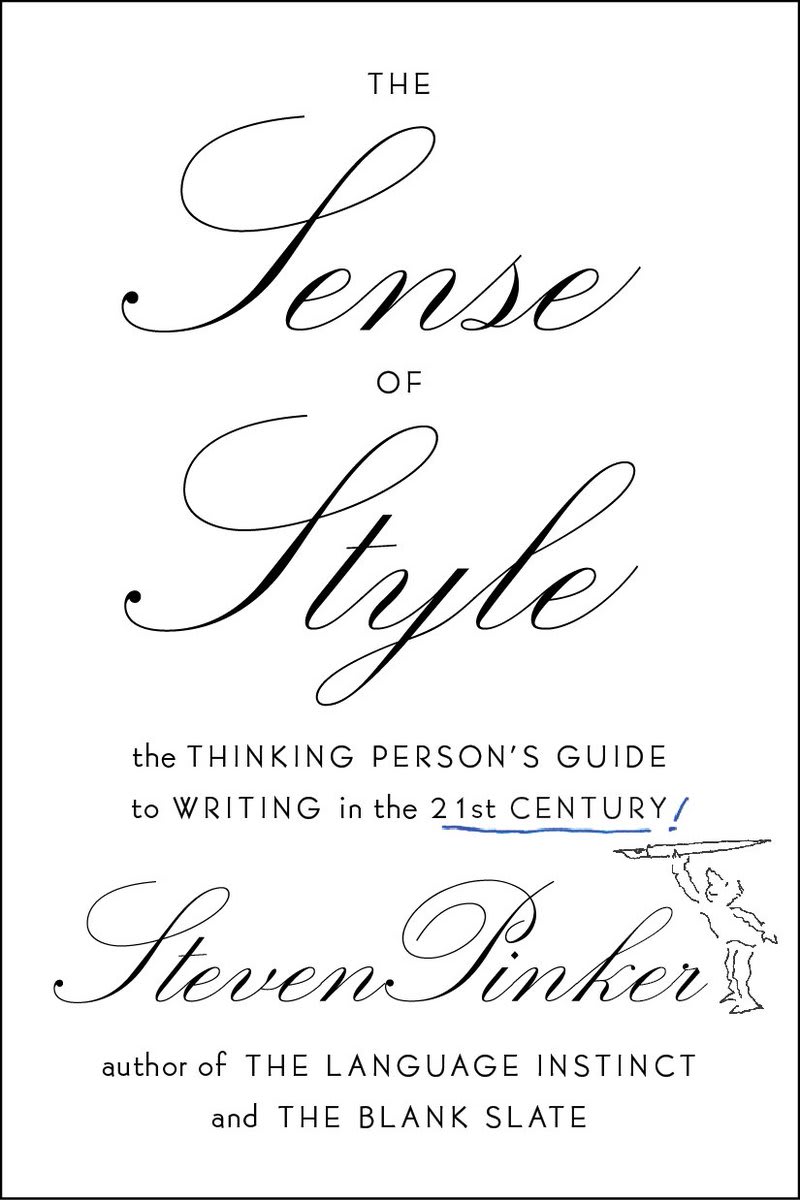
Who is it for: People looking to improve their writing skills.
When to read it: Whenever you’re finding yourself staring at a blank page too often.
With explanations that dig deep into the nature of language and how people’s minds process language, here comes a guide for all the people out there who know how to write, and want to do it better. Steven Pinker is a psycholinguist, cognitive scientist and one of the world’s leading authors on language and mind. To his well-argued points, he adds humour and funny illustrations, real-life examples and quotes. It is an easy to read book even for people who don’t have a linguistic background. This book will not give you answers to all your questions, but it will teach you how to send your message across with style.
A manual for the new millennium cannot just perpetuate the dictates of earlier manuals. Today’s writers are infused by the spirit of scientific skepticism and the ethos of questioning authority. They should not be satisfied with ‘That’s the way it’s done’ or ‘Because I said so,’ and they deserve not to be patronised at any age. They rightly expect reasons for any advice that is foisted upon them.
The Elements of Content Strategy- Erin Kissane

Who is it for: Product people, designers, content strategists, technical writers. Marketers who contribute with content for marketing or product purposes.
When to read it: Early on. The book might be too light for people working in this field for more than two years.
The task of writing meaningful content can be difficult, especially if you are at the beginning of your career. It can become even more difficult when you are working on a big website, with multiple pages, or a bigger product, with in-app copy, a knowledge base and more resources. If nobody owns the content in your startup and no one understands how it’s structured, you already need a content strategist. Or, at the very least, you need to learn the principles behind it and create structure and intent. Erin Kissane provides an introduction into this complex topic: from its basic principles to tools and techniques to get you started. It also contains a resources list for more advanced insights!
This book is not an argument for the importance of content strategy. Neither is it a tutorial, a workbook, or a gallery of deliverables. It will not show you how to turn your BA in English into a $100,000 salary in ten easy steps. And it is emphatically not an exhaustive compendium of everything we know about content work. Instead it collects our discipline’s core principles, competencies, and practices for easy reference (...).
Content Design – Sarah Richards

Who is it for: Founders, product people, designers, marketers. Writers who have to work with a lot of information and present it in a digestible way.
When to read it: Early in your career. If you’ve got UX design experience, you might find parts of it familiar.
Through her work at the Government Digital Service, Sarah invented content design as a discipline. She and her team decided to take an honest and straightforward approach and put the user’s most important needs at the core of their research. Their aim was to find the most precise way of showing the user the information they need, when they need it. The book is short, but concise. It offers insight on what content design is and it gives tips on how you can adapt it to make it work for your company. Sarah also took part in creating the Readability Guidelines project, a movement that aims to provide the instructions necessary for creating content that is more comprehensible and inclusive. She exemplifies what she preaches through the layout of the book, making it unique and eye-catching.
Writing for Designers- Scott Kubie
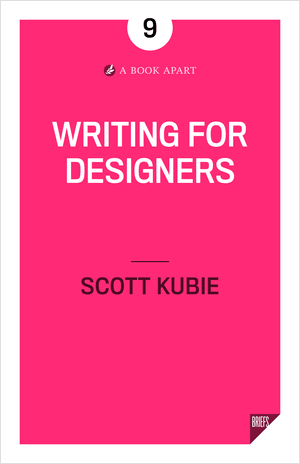
Who is it for: Designers, Managers, Founders who have to take on the occasional writing project. May be useful for marketers or content designers looking for more structure in their work.
When to read it: Before starting a big writing project. Whenever you need to align a team on how to work on content and review writing.
Everyone writes, and everyone has their own process. But try to have them explain it, and you’ll often get awkward silences. Scott Kubie sees writing as an essential part of design. However, coming up with the right workflow is not always easy. You can simplify the process by following Kubie’s 4 step workflow. This is a short workbook that guides you through all these steps on how you can improve your writing skills and feel empowered while doing so.

Book recommendations of real-life startup lessons
Some people have built empires from their startups. Some of them are still standing, and you might be wondering how they got there, others have failed miserably and you’d be better off seeing what mistakes they’ve done in order to avoid them. The following books provide an insight into the behind-the-scenes decision making that makes (or breaks) a company.
The Hard Thing About Hard Things: Building a Business When There Are No Easy Answers- Ben Horowitz

Who is it for: Founders, CEOs, people trying to build a business.
When to read it: In the early days of leading a team or making big decisions for your business.
In 2009, Ben Horowitz co-founded with Marc Andressen a venture capital firm that invests in start-ups and growth companies. Today, Andressen Horowitz stands out with investments made in Skype, Twitter, Facebook and Airbnb (just to name a few), becoming one of the most influential VC firms shaping the world.
You can view his book as a memoir or as a business advice book. Either way, it is an honest recollection of all the good and difficult times Ben Horowitz went through with his business and all the decisions that led up to it. This is a book from a CEO for other CEOs and executives.
I do not attempt to present a formula in this book. Instead, I present my story and the difficulties that I have faced. As an entrepreneur, a CEO, and now a venture capitalist, I still find these lessons useful- especially as I work with a new generation of founder- CEOs. Building a company inevitably leads to tough times. I’ve been there; I’ve done that. Circumstances may differ, but the deeper patterns and the lessons keep resonating.
Hooked: How to Build Habit-Forming Products- Nir Eyal
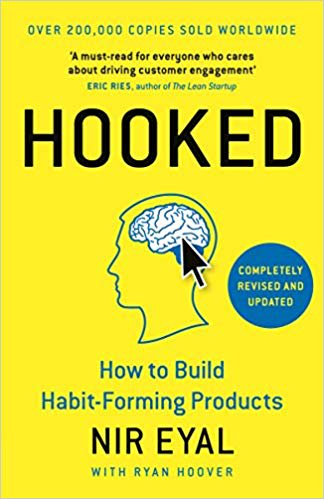
Who is it for: Founders, designers, marketers, or anyone working on customer success.
When to read it: Both before launching your MVP or before looking to improve your existing product.
What is the psychology behind products? What makes us come back again and again to get more of the product we love?
Based on substantial research, ‘Hooked’ offers advice on how to build products that attract customers. The ‘hook model’ is in no way meant to be abused or to manipulate people into using certain products. However, when used with responsibility and mindfulness, it can provide insight into our triggers and habits. In a world where all service providers compete for the user’s attention, time, and money, this book teaches us what are the ingredients that go into making a successful product that can deliver value and dominate the market.

Bad Blood: Secrets and Lies in a Silicon Valley Startup – John Carreyrou
![]()
Who is it for: Anyone in the startup industry, or interested in venture capital behind the scenes.
When to read it: Anytime.
Theranos scandal has become known as one of the biggest corporate frauds. The promise to be able to conduct blood tests with just a fraction of the blood you would normally use, came as a revolutionary idea. Especially when it came from Elizabeth Holmes, a young, intelligent-looking, Stanford dropout who strived to emulate Steve Jobs in everything she did. The media was also eager to witness the rise of a new brilliant mind. This attracted some high profile investors like US education secretary, Betsy DeVos or the Walton family. Needless to say, they have all lost millions of dollars when Theranos failed to deliver what it promised and went bankrupt in 2018.
In his book, John Carreyrou reports how he uncovered the scam and how Elizabeth Holmes, the CEO of Theranos managed to fool an entire world. This is a lesson on the dangers of celebrity and the power of deception.
By all accounts, she had a vision that she genuinely believed in and threw herself into realizing. But in her all-consuming quest to be the second coming of Steve Jobs amid the gold rush of the “unicorn” boom, there came a point when she stopped listening to sound advice and began to cut corners. Her ambition was voracious and it brooked no interference. If there was collateral damage on her way to riches and fame, so be it.
Running Lean: Iterate from Plan A to a Plan That Works (Lean Series) 2nd Edition – Ash Maurya

Who is it for: Founders, executives, managers, product people, marketers.
When to read it: In the early stages of a startup, when looking for product-market fit.
Product-market fit and symptoms of not getting this right are some of the main reasons why startups fail. That’s why Running Lean is another great book on lean methodology that will teach you how to transform your ideas into action. From finding a problem that is worth solving to finding the best market for your product, the book will take you through all the necessary steps so that you can increase your chances for success.
Most entrepreneurs start with a strong initial vision and Plan A for realising that vision. Unfortunately, most Plan A’s don’t work. While a strong vision is required to create a mantra and make meaning, a Lean Startup strives to uphold a strong vision with facts, not faith. It is important to accept that your initial vision is built largely on untested assumptions (or hypotheses). Running Lean helps you systematically test and refine that initial vision.
Book recommendations for learning how to work with people
Out of all the skills this book list covers, this is probably the most important one. Whether you’re a CEO, a manager, a designer, a writer, or a developer, you have to talk to people every day in order to get stuff done. Being able to communicate well with the people around you can start a healthy workplace culture. We think these books can give you insights into how to achieve that.
Radical Candor: Be a Kick-Ass Boss Without Losing Your Humanity- Kim Scott

Who is it for: Founders, executives, anyone managing a team.
When to read it: Anytime, especially when you’re starting work with a new team.
If you’ve ever wondered if you bring too much of yourself to work or feel like being professional is about wearing masks, this book is for you. Kim Scott teaches us how to be better leaders and managers while keeping our humanity. Kim starts from the premise that innovation and creativity flourish in an environment where human relationships are valued and people feel safe to share their feedback. She gives us tips on how to avoid creating a toxic culture at work, whether by being too nice and holding back feedback or by being aggressively forthcoming without awareness of the receiver’s mood. Radical candor can be achieved by having sincere conversations with your coworkers and dealing with tension and conflict in a balanced manner.

You’re My Favorite Client – Mike Monteiro

Who is it for: Freelancers, owners of small businesses, people working with freelancers.
When to read it: Early in your career, before getting your first clients. It is also useful later, especially when you need a pep talk.
This book comes as a follow-up to “Design is a Job” by the same author. Maybe you are a freelancer just starting in the field of design, or maybe you’re someone who works with designers on a daily basis and wants to know how to create an environment in which creativity can thrive. With straightforward writing that adds humour to soften the tension, Mike Monteiro explains how you can negotiate your contracts and payments. He also tells you how to manage the relationship with your clients, especially when things go sideways.
If you’ve never worked with a designer before, this book will demystify how to hire the right designer, what to expect from them, and how to work collaboratively to ensure your project’s success. (Also how to handle the situation should it go south.) If you’ve worked with a designer, you’ll find out how to communicate more effectively, why giving them detailed lists of what to do doesn’t get you their best work, and why hovering over their shoulder drives them nuts. You’ll find out why designers belong in the strategy meeting. You’ll find out design starts way before a pixel gets pushed or a line gets drawn. To any designers reading this book: I’m here to help you too.
The Year Without Pants: WordPress.com and the Future of Work- Scott Berkun

Who is it for: Managers, team leaders, people interested in how a remote organization works.
When to read it: Preferably before you have to work within a remote team.
Studies show that 79% of millennials list ‘flexibility in the workplace’ as a top priority when choosing a job. As millennials have become an essential part of the workforce, it’s important to take into consideration how the future of work will look. Scott Berkun challenges some long-held assumptions about working remotely, schedules, communication and experimentation.
But all of our work was invisible, hidden inside the glowing screens of our laptops. What no one could possibly know is at the click of a button from any of our web browsers, we could launch features that would instantly have an impact on millions of people around the world. Yet for anyone sitting nearby, for all they knew we were playing solitaire.
Learning for yourself is great, but sometimes talking to an expert is exactly what you need. If you have questions about building your product, we’re happy to sit down for a call. No strings attached.

Naomi Costa
Marketing Intern
Naomi has a BA in English and Japanese and is studying Science, Technology and Innovation in Governance. She’s been interning with Tapptitude for the last month, where she’s learning the behind-the-scenes of building products and how to write valuable content for startups and brands as a product studio.






